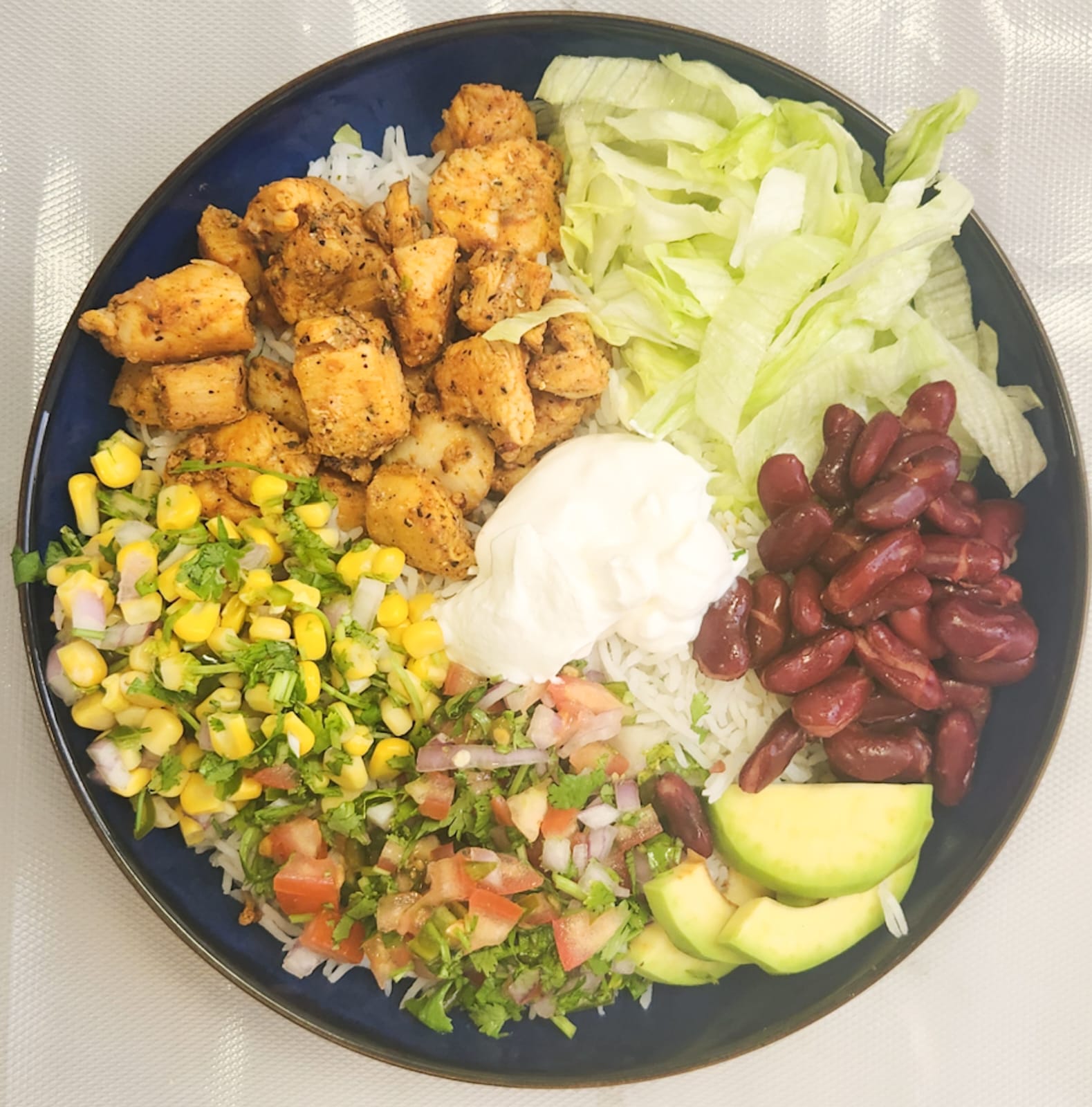Reset your hormones in just 21 days with this Hormone Reset Diet! Packed with hormone balancing recipes, metabolism-boosting foods, and clean eating meal ideas, this easy Hormone Balancing Diet plan helps women improve gut health, restore energy, and feel their best. Simple, nourishing meals you can prep ahead for a sustainable, healthy hormone balance!
If you’re struggling with hormone imbalance, digestive issues, or want a structured, balanced meal plan to follow, this guide has you covered. From metabolism-boosting foods to easy breakfasts, lunches, dinners, and snacks, it’s a practical, sustainable way to eat for healthy hormones and overall wellness.
The best foods for hormone balance for women include leafy greens, omega-rich fish, nuts, seeds, and fermented foods that nurture both hormonal and gut health, and diet synergy.
By combining fiber, healthy fats, and clean protein, these hormone balancing recipes help reduce inflammation, boost energy, and stabilize mood swings naturally. It’s a lifestyle of mindful eating that heals from within — one hormone-supportive meal at a time.
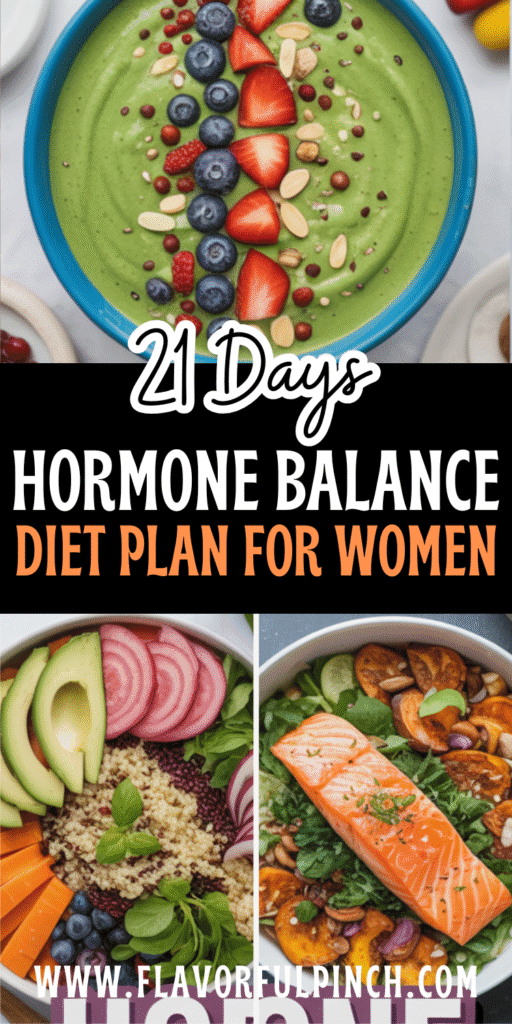
Hormonal health is at the center of how you feel, think, and function every day — and the good news is that food can make a real difference. If you’ve ever wondered which food is good for hormonal balance or how to balance hormones naturally, it all starts in your kitchen.
Choosing nutrient-dense whole foods, especially fruits that balance hormones in females like berries, avocados, and pomegranates, can help regulate mood, energy, and metabolism.
At the same time, limiting hormonal imbalance foods to avoid — such as processed sugars, refined oils, and artificial additives — supports your body’s ability to restore its natural rhythm. With small, intentional changes, you can even begin to balance your hormones in a week and notice shifts in energy, digestion, and focus.
Understanding Hormonal Imbalance
Hormones are the body’s chemical messengers — subtle, powerful, and deeply interconnected. They regulate everything from mood and metabolism to sleep, energy, fertility, and appetite. When even one hormone falls out of balance, the ripple effect can be significant: fatigue, mood swings, stubborn weight gain, poor sleep, and digestive changes are often the earliest signs that something’s off.
Hormonal imbalance can stem from chronic stress, nutrient deficiencies, poor gut health, disrupted sleep, or environmental toxins. The good news? Nutrition plays one of the most impactful roles in supporting hormone health. A nutrient-rich diet filled with whole foods, healthy fats, fiber, and antioxidants can help restore equilibrium naturally — allowing your body to return to its rhythm, energy, and emotional steadiness.
Key Hormones and Their Roles
1. Estrogen
Estrogen is one of the main hormones responsible for reproductive health, bone strength, and mood regulation. It supports collagen production and cardiovascular function as well. When imbalanced, it can cause irregular periods, fatigue, and unwanted weight gain around the hips and thighs.
2. Progesterone
Known as the “calming hormone,” progesterone balances estrogen, supports fertility, and helps with sleep and stress management. It also plays a crucial role in maintaining pregnancy and regulating the menstrual cycle. Low levels can lead to anxiety, irritability, or disrupted sleep patterns.
3. Cortisol
Often called the “stress hormone,” cortisol helps control metabolism, blood sugar, and inflammation. It’s essential for daily energy cycles and the body’s fight-or-flight response. Chronic elevation can disrupt sleep, cause belly fat storage, and suppress immunity.
4. Insulin
Insulin regulates blood sugar by helping cells absorb glucose for energy. It’s a key player in metabolism and weight control. When insulin levels are too high, the body becomes resistant — increasing the risk of diabetes, fatigue, and hormonal weight gain.
5. Thyroid Hormones (T3 & T4)
These hormones regulate metabolism, temperature, and energy levels. They influence nearly every system in the body. When they’re off balance, you might experience fatigue, dry skin, hair loss, or unexplained weight changes.
6. Leptin
Leptin is the hormone that signals fullness and helps regulate appetite. It communicates with the brain about energy stores and calorie intake. When levels are disrupted, the body may ignore fullness cues, leading to overeating and difficulty maintaining weight.
7. Ghrelin
Known as the “hunger hormone,” ghrelin triggers appetite and helps the body prepare for food intake. It rises before meals and falls afterward. When ghrelin remains high due to stress or poor sleep, it can drive overeating and sugar cravings.
8. Insulin-like Growth Factor (IGF-1)
This hormone supports cell growth, tissue repair, and muscle development. It works in tandem with growth hormone to maintain a youthful metabolism. Imbalance can accelerate aging signs and impact recovery after exercise.
9. Melatonin
Melatonin regulates the body’s sleep-wake cycle and supports nighttime hormone repair. It also has antioxidant properties that protect cells from damage. Too little can disrupt sleep, lower immunity, and increase oxidative stress.
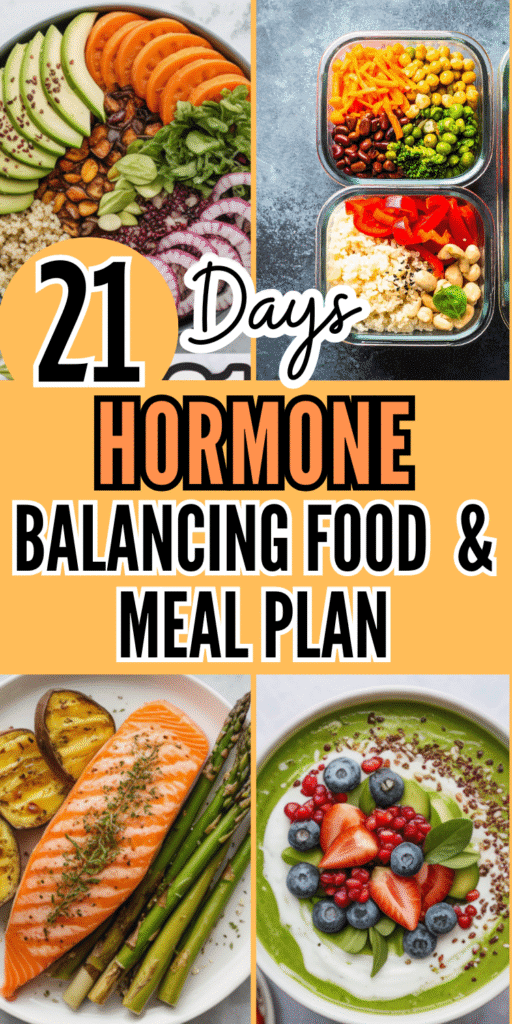
Common Signs of Hormonal Imbalance
Physical Symptoms:
- Unexplained weight gain or inability to lose weight
- Persistent fatigue and low energy
- Sleep disturbances or insomnia
- Hair loss or thinning
- Dry skin and brittle nails
- Bloating and digestive issues
- Hot flashes and night sweats
- Irregular or painful periods
- Low libido
- Headaches or migraines
Mental and Emotional Symptoms:
- Mood swings and irritability
- Anxiety and depression
- Brain fog and poor concentration
- Memory problems
- Increased stress sensitivity
Metabolic Symptoms:
- Blood sugar fluctuations
- Intense sugar cravings
- Difficulty building muscle
- Stubborn belly fat
- Constant hunger or lack of appetite
Root Causes of Hormonal Imbalances
Dietary Factors:
- Excessive sugar and refined carbohydrate consumption
- Processed foods and inflammatory oils
- Inadequate protein intake
- Nutrient deficiencies (especially magnesium, zinc, vitamin D, B vitamins)
- Overconsumption of caffeine and alcohol
- Pesticides and hormones in conventional foods
Lifestyle Factors:
- Chronic stress and elevated cortisol
- Inadequate sleep (less than 7-8 hours)
- Sedentary lifestyle or excessive exercise
- Exposure to endocrine-disrupting chemicals
- Birth control pills and hormone medications
- Gut health issues and microbiome imbalances
Hormone Balancing Food Groups
1. Healthy Fats
Healthy fats (unsaturated fats such as omega-3s and oleic acid) are foundational for hormone production and regulation. They help form the structural building blocks of hormones and reduce inflammation so the endocrine system functions smoothly.
Foods in this group: Fatty fish (salmon, mackerel, sardines) · Olive oil · Avocado oil · Nuts (walnuts, almonds, pecans) · Seeds (flaxseed, chia, hemp)
Try out these “Chia-focused” recipes that I have specifically curated for their healthy fats and protein content.
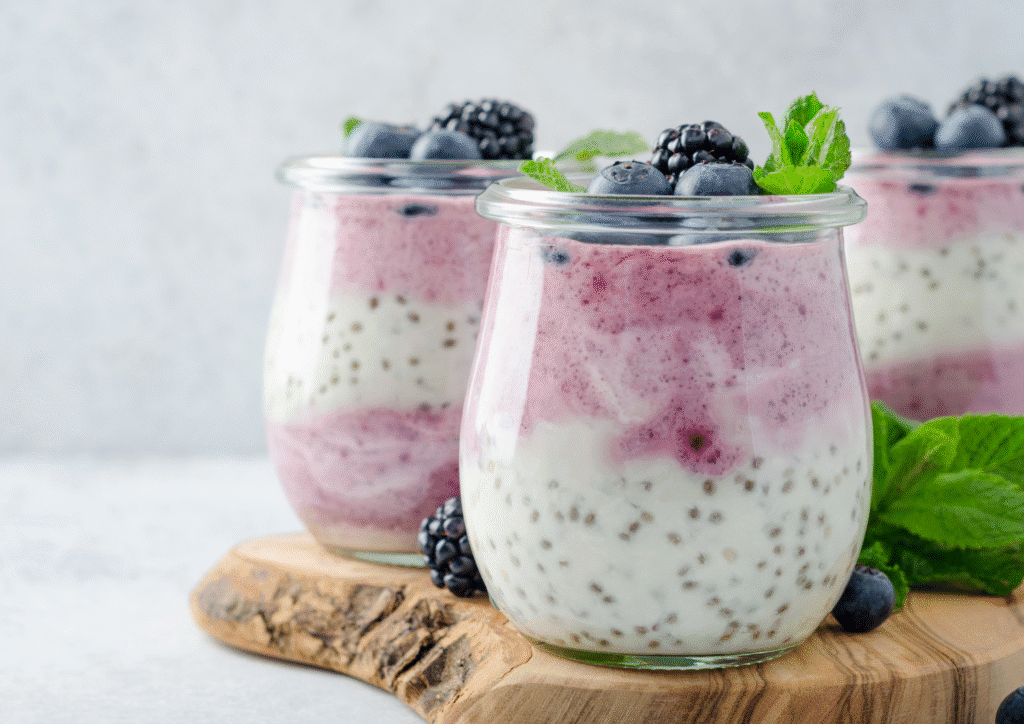
2. High-Quality Protein Foods
Protein is essential for producing peptide hormones — those that manage appetite, stress response, energy, and metabolism. Using adequate and varied protein sources supports balanced hormone synthesis and stable blood sugar.
Foods in this group: Eggs · Chicken breast/turkey · Lean red meat · Fish & seafood (tilapia, cod, shrimp) · Greek yogurt · Legumes (beans, lentils)
I have compiled a list of 15 High-Protein Greek Yogurt Bowls that will help you manage your appetite, reduce stress, and provide energy boosts.
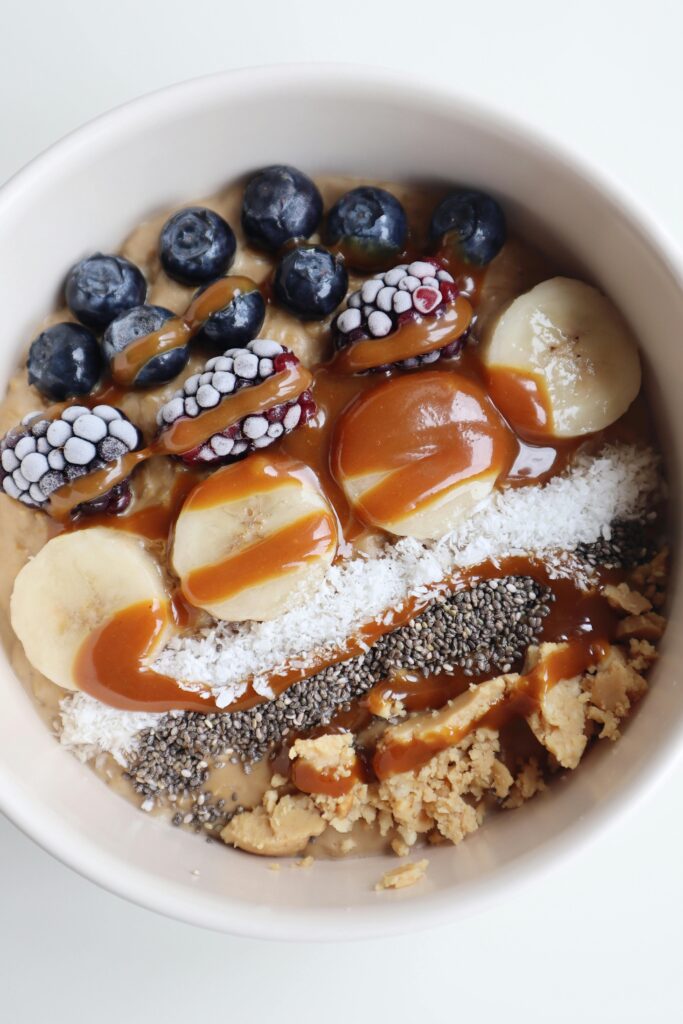
3. Cruciferous Veggies
Cruciferous vegetables contain compounds like indole-3-carbinol and diindolylmethane, which help the liver break down and remove excess estrogen. This supports hormonal balance and reduces the risk of estrogen dominance.
Foods in this group: Broccoli · Cauliflower · Brussels sprouts · Kale · Cabbage · Bok choy · Radish · Collard greens · Mustard greens · Rutabaga.
I know most people don’t like this nutritiously full food item, but combine it with butter and, trust me!, you will convert! Here is my Roasted Garlic Butter Spinach Pasta recipe to help you convert.

4. Think Mediterranean for Hormone-Balancing Foods
A Mediterranean-style diet naturally aligns with hormone health: plenty of veggies, legumes, healthy fats, whole grains, and minimal processed foods. This pattern supports estrogen balance, inflammation control, and metabolic health.
Foods in this group: Olive oil · Nuts · Legumes · Vegetables · Fruits · Whole grains (in moderate amounts).
I have been experimenting with Mediterranean foods for some time now and this Mediterranean Lentil Tabbouleh has been my go-to for busy weekend nights.
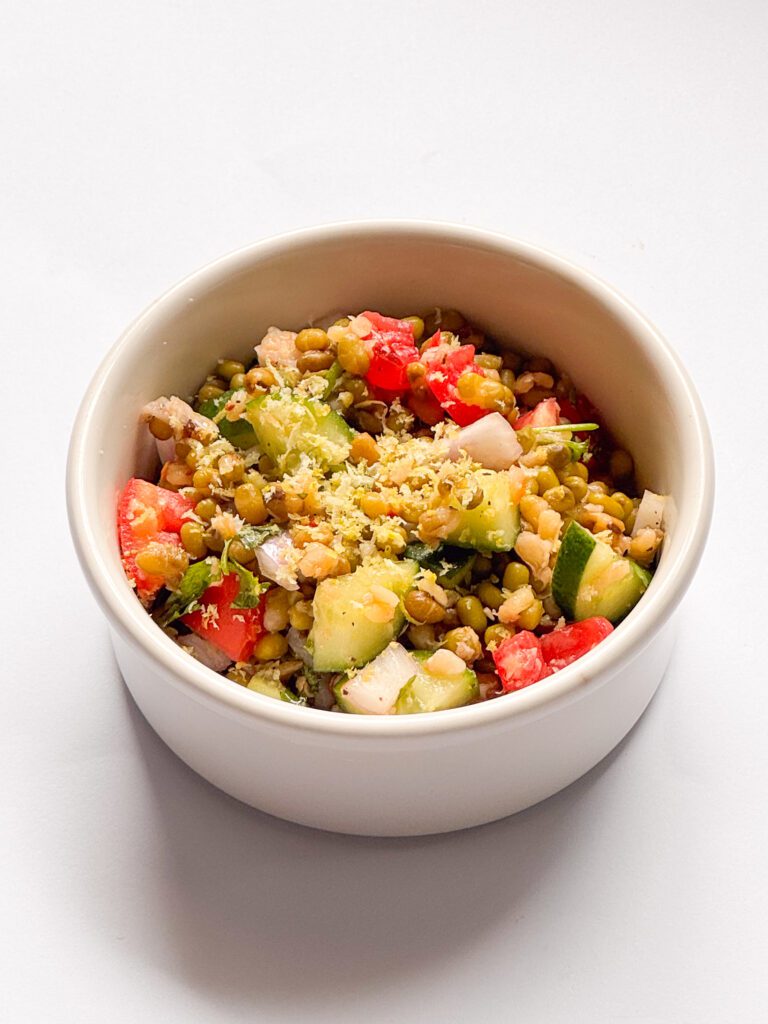
5. Complex Carbohydrates High in Dietary Fiber
Complex carbs packed with fiber help regulate insulin, support gut health, and contribute to liver function — all vital for maintaining hormonal equilibrium. Fiber slows digestion, prevents blood sugar spikes, and aids hormone excretion.
Foods in this group: Fruits (apples, pears, peaches, berries) · Vegetables (sweet potatoes, squash, carrots) · Whole grains (quinoa, barley, buckwheat, oats) · Legumes (beans, lentils).
A crispy Peach cobbler recipe is the perfect duo of carbs and fiber for the hormonal balance.

6. Eat Your Colors!
Including a variety of colorful fruits and vegetables ensures you receive diverse antioxidants, phytonutrients, vitamins, and minerals — all supportive of hormone health and detoxification pathways.
Foods in this group: Berries · Bell peppers · Beets · Green leafy vegetables · Orange/yellow veggies · Purple/red fruits (grapes, cherries).
I recommend this Anti-inflammatory Strawberry Beet Orange Ginger Smoothie With Chia Seed for a unique taste as well as the color.

7. High Magnesium Foods
Magnesium is a key mineral in hormone function, supporting thyroid health, cortisol regulation, and overall metabolic balance. Ensuring sufficient magnesium helps stabilize mood and supports endocrine systems.
Foods in this group: Spinach · Avocado · Tofu · Peanut butter · Pumpkin seeds · Almonds · Black beans · Edamame.
Pumpkin is a rich source of Magnesium for your bodily needs. You can try out any one of these recipes for your magnesium fill.
No Bake Pumpkin Peanut Butter Oat Protein Balls
Mocha Pumpkin Spice Chai Iced Latte
Blended Pumpkin Pie Overnight Oats
Iced Pumpkin Spice Latte (Starbucks Copycat)
8. Add Plenty of Herbs & Spices
Herbs and spices are compact yet potent sources of antioxidants and bioactive compounds that support hormone balance, reduce inflammation, and enhance the nutrient value of whole meals.
Foods in this group: Fresh/dried herbs (parsley, basil, mint, cilantro) · Spices (turmeric, cinnamon, cumin, paprika, allspice)
Try my unique Turmeric Latte (Golden Milk) blend and share your review.

9. Gut-Healthy Foods
Gut health is deeply connected to hormone balance: a healthy gut microbiome supports nutrient absorption, hormone metabolism, and immune regulation. Prioritizing probiotic and prebiotic foods helps maintain hormonal harmony.
Foods in this group: Yogurt with live cultures · Kefir · Sauerkraut · Kimchi · Miso · Tempeh · Prebiotic foods (asparagus, garlic, onions, oats, beans) · Dark chocolate, tea, berries (polyphenols)
Creating these protein and prebiotic-rich berry flavored Homemade Drinkable Yogurts can do the trick!
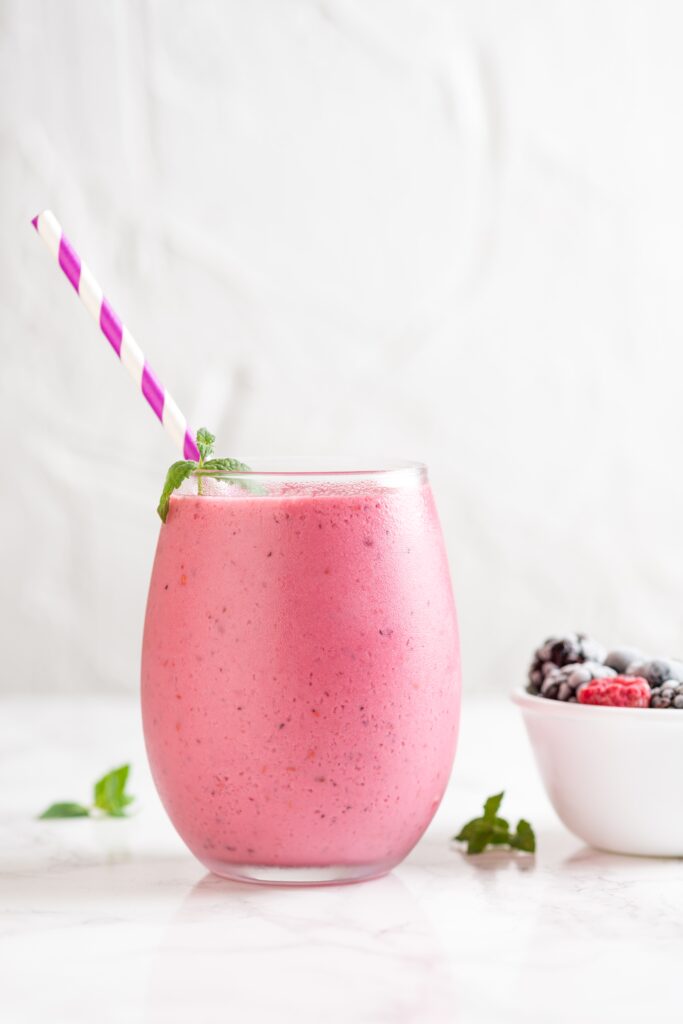
10. Phytoestrogen-Rich Foods
Phytoestrogens are plant compounds that can mimic or modulate the action of estrogen in the body. Including these foods can help gently support estrogen balance — useful for women navigating perimenopause, irregular cycles, or estrogen dominance. They’re not a replacement for medical care, but when eaten as part of a varied diet they can support healthy hormone signaling and liver processing.
Foods in this group: Flaxseeds · Soy (tofu, tempeh, edamame) · Sesame seeds · Chickpeas · Mung beans
This viral Chickpea Pomegranate Apple Crunch Salad will definitely boost your phytoestrogen count.
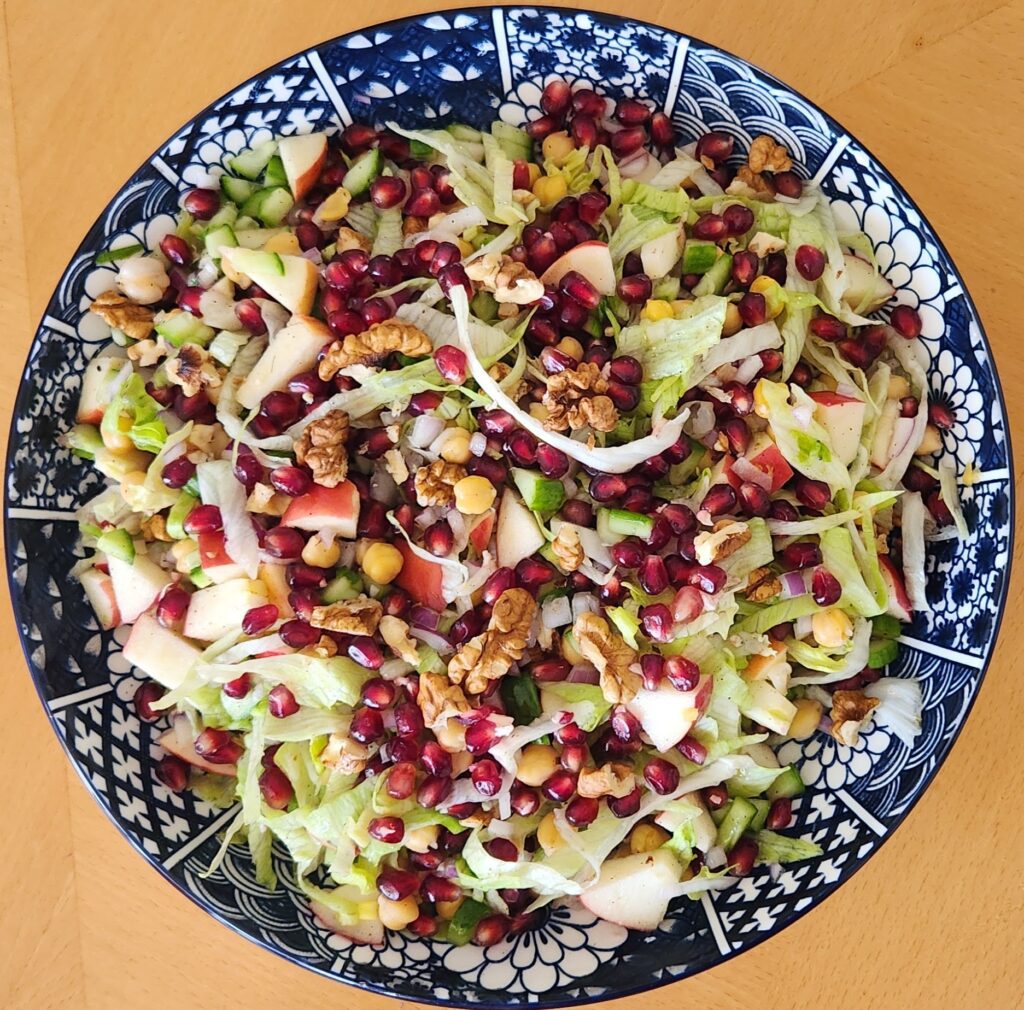
11. Methylation-Supporting Foods
Methylation is a key biochemical pathway that helps the body process hormones, detoxify estrogen, and support mood and energy; foods rich in B-vits, choline, and folate feed this system. Prioritizing these nutrients supports efficient hormone metabolism, neurotransmitter production, and healthy detox pathways in the liver. Eating a variety of these whole foods helps maintain methylation capacity without relying on high-dose supplements.
Foods in this group: Leafy greens (spinach, kale) · Eggs · Beans & lentils · Asparagus · Beets · Pumpkin seeds · Nutritional yeast
The Mexican Street Corn Kale Salad offers a daily detox for the liver in a nutritious and tasty manner.
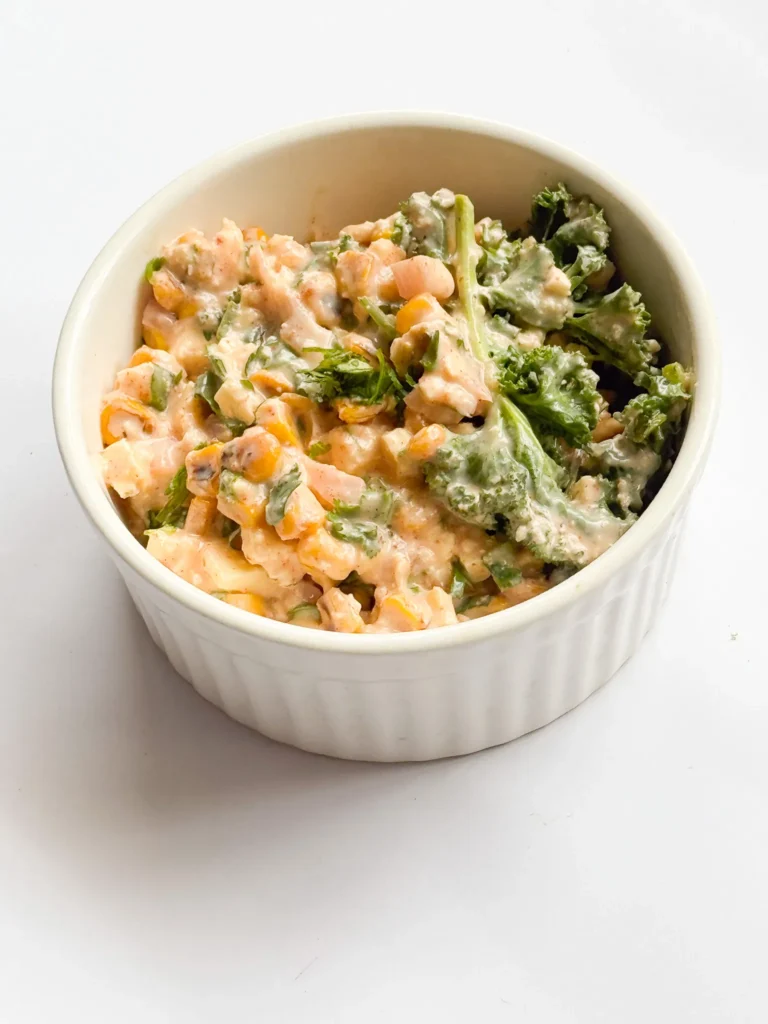
12. Anti-Inflammatory & Omega-3 Rich Foods
Chronic inflammation interferes with many hormonal systems (insulin, cortisol, sex hormones); anti-inflammatory foods help calm this background noise so hormones can reset. Omega-3 fatty acids are especially potent — they reduce inflammatory markers, support mood, and aid adrenal and brain health. Pair these with colorful plants and spices for a combined anti-inflammatory effect.
Foods in this group: Fatty fish (salmon, sardines, mackerel) · Walnuts · Flaxseed · Chia seeds · Olive oil · Turmeric · Ginger
The One Skillet Salmon with Lemon Orzo is easy to cook and rich in Omega-3.
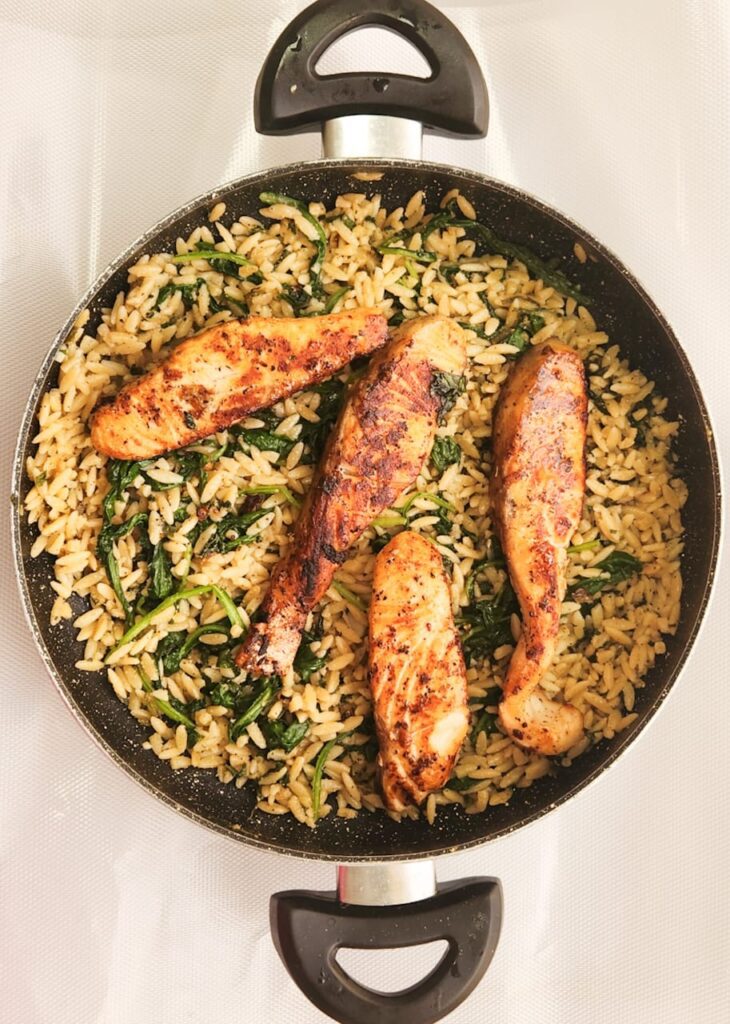
Food Groups To Avoid
Let’s delve into the world of foods you should not be eating inside or outside your home. These are dangerous for your gut and destroy the good bacteria in your body making your body go into a deep hormonal imbalance that is hard to recover from.
1. Processed Sugars
Too much sugar can cause insulin spikes, leading to energy crashes, mood swings, and hormonal imbalance — especially for women with PCOS or thyroid issues. Try to cut back on sugary snacks and drinks to keep your blood sugar steady.
Examples: Candy, soda, sweetened coffee drinks, pastries, and packaged desserts.
2. Refined Carbohydrates
White bread, pasta, and baked goods made with refined flour break down quickly into sugar and can mess with insulin and estrogen balance. Choose whole grains instead for longer-lasting energy.
Examples: White bread, white rice, crackers, and most store-bought muffins or bagels.
3. Highly Processed Meats
Processed meats often contain preservatives, sodium, and hormones that may interfere with your body’s own hormone production. Eating them often can also raise inflammation levels.
Examples: Bacon, sausages, deli meats, pepperoni, and hot dogs.
4. Fried and Fast Foods
Deep-fried foods are high in trans fats, which can raise inflammation and stress your adrenal glands. They may also affect estrogen and testosterone balance when eaten regularly.
Examples: French fries, fried chicken, onion rings, and fast-food burgers.
5. Dairy with Added Hormones
Some conventional dairy products contain added growth hormones or antibiotics that may disrupt your natural hormone levels. If you enjoy dairy, look for organic or hormone-free options.
Examples: Regular milk, processed cheese slices, and non-organic yogurt.
6. Caffeine in Excess
A little caffeine is fine, but too much can raise cortisol (your stress hormone) and throw off your sleep-wake rhythm. This can make it harder for your body to regulate other hormones properly.
Examples: Energy drinks, strong coffee, espresso shots, and certain pre-workout drinks.
7. Alcohol
Alcohol can interfere with liver function, which plays a big role in breaking down and removing extra hormones. Over time, heavy drinking may cause estrogen dominance and fatigue.
Examples: Beer, wine, cocktails, and hard liquor.
8. Artificial Sweeteners
Though low in calories, artificial sweeteners can confuse your body’s hunger and insulin signals. They may also impact gut bacteria, which are key players in hormone balance.
Examples: Diet sodas, sugar-free candies, flavored protein bars, and “light” desserts.
9. Packaged Snack Foods
Most packaged snacks contain refined oils, salt, and preservatives that can cause inflammation and insulin resistance — both linked to hormonal imbalance. Try homemade or whole-food snacks instead.
Examples: Chips, cheese puffs, granola bars, and microwave popcorn.
10. Plastic-Packaged or Microwaved Foods
Some plastics release chemicals like BPA that can act like estrogen in the body, especially when heated. Switching to glass or stainless steel for storage helps lower that risk.
Examples: Microwave meals in plastic trays, bottled water left in the sun, and food stored in plastic wrap.
Daily Meal Structure
Breakfast (Within 1 hour of waking)
Purpose: Stabilize blood sugar, support cortisol rhythm, provide sustained energy
Formula: Protein (20-30g) + Healthy Fat + Complex Carbs + Vegetables
Examples:
- Vegetable omelet with avocado and sweet potato
- Green smoothie with protein powder, almond butter, spinach, berries
- Chia pudding with hemp seeds, coconut yogurt, and berries
- Smoked salmon with avocado on gluten-free toast
- Leftover dinner protein with roasted vegetables
Mid-Morning Snack (If needed, 3 hours after breakfast)
Purpose: Prevent blood sugar crashes, maintain energy
Formula: Protein + Healthy Fat
Examples:
- Apple slices with almond butter
- Hard-boiled eggs with cucumber slices
- Handful of raw nuts with berries
- Celery with cashew butter
- Greek yogurt with pumpkin seeds
Lunch (3-4 hours after breakfast)
Purpose: Sustain afternoon energy, prevent 3pm crash
Formula: Protein (25-35g) + Large serving of vegetables + Healthy Fat + Optional complex carbs
Examples:
- Large salad with grilled chicken, avocado, olive oil dressing
- Grass-fed burger over greens with sweet potato fries
- Wild salmon with roasted Brussels sprouts and quinoa
- Chicken vegetable soup with side salad
- Turkey lettuce wraps with vegetables and hummus
Afternoon Snack (3-4 hours after lunch)
Purpose: Bridge to dinner, prevent evening overeating
Formula: Protein + Vegetables or Healthy Fat
Examples:
- Carrots and bell peppers with guacamole
- Turkey roll-ups with mustard
- Greek yogurt with cinnamon
- Bone broth with sea salt
- Raw vegetables with tahini
Dinner (3-4 hours after lunch, at least 2-3 hours before bed)
Purpose: Repair and restore overnight, support detoxification
Formula: Protein (25-30g) + Large serving of vegetables (especially cruciferous) + Healthy Fat
Examples:
- Grass-fed steak with broccoli and cauliflower mash
- Baked wild cod with asparagus and olive oil
- Chicken stir-fry with mixed vegetables (no rice)
- Beef and vegetable curry over cauliflower rice
- Roasted turkey breast with Brussels sprouts and sweet potato
Optional Evening Snack (If hungry, 1-2 hours before bed)
Purpose: Prevent overnight blood sugar drops, support sleep
Formula: Small portion of protein or fat
Examples:
- Handful of raw almonds
- Herbal tea with collagen powder
- Small serving of Greek yogurt
- Chia pudding
- Bone broth
Detailed 21-Day Meal Plan
Week 1: Days 1-7
Day 1:
- Breakfast: Vegetable frittata with spinach, mushrooms, and bell peppers; side of avocado
- Snack: Apple slices with almond butter
- Lunch: Grilled chicken breast over mixed greens with olive oil and lemon dressing
- Snack: Carrot sticks with hummus
- Dinner: Baked wild salmon with roasted broccoli and cauliflower
Day 2:
- Breakfast: Green smoothie with spinach, protein powder, almond butter, berries, and coconut milk
- Snack: Hard-boiled eggs with cucumber slices
- Lunch: Turkey lettuce wraps with avocado, tomatoes, and mustard
- Snack: Celery with cashew butter
- Dinner: Grass-fed beef stir-fry with mixed vegetables (no rice)
Day 3:
- Breakfast: Chia pudding made with coconut milk, topped with berries and hemp seeds
- Snack: Greek yogurt with pumpkin seeds
- Lunch: Large kale salad with grilled shrimp, avocado, and tahini dressing
- Snack: Bell pepper slices with guacamole
- Dinner: Baked chicken thighs with Brussels sprouts and sweet potato
Day 4:
- Breakfast: Scrambled eggs with sautéed kale and cherry tomatoes; side of avocado
- Snack: Handful of raw walnuts and blueberries
- Lunch: Wild salmon salad with mixed greens, cucumber, and olive oil dressing
- Snack: Apple slices with sunflower seed butter
- Dinner: Turkey meatballs with zucchini noodles and marinara sauce
Day 5:
- Breakfast: Coconut yogurt parfait with chia seeds, berries, and sliced almonds
- Snack: Hard-boiled eggs with cherry tomatoes
- Lunch: Grass-fed burger (no bun) over arugula with sweet potato fries
- Snack: Cucumber slices with tahini
- Dinner: Baked cod with roasted asparagus and cauliflower mash
Day 6:
- Breakfast: Vegetable omelet with broccoli, onions, and mushrooms; side of berries
- Snack: Greek yogurt with cinnamon and flaxseeds
- Lunch: Chicken and vegetable soup with side salad
- Snack: Carrot sticks with almond butter
- Dinner: Grilled lamb chops with roasted Brussels sprouts and parsnips
Day 7:
- Breakfast: Smoked salmon with avocado and sautéed spinach on gluten-free toast
- Snack: Handful of raw almonds and raspberries
- Lunch: Large salad with grilled chicken, avocado, cucumber, and olive oil dressing
- Snack: Celery sticks with cashew butter
- Dinner: Baked chicken breast with roasted mixed vegetables (broccoli, cauliflower, carrots)
Week 2: Days 8-14
Day 8:
- Breakfast: Green smoothie bowl with protein powder, spinach, topped with berries and hemp seeds
- Snack: Hard-boiled eggs with sauerkraut
- Lunch: Turkey and avocado lettuce wraps with side of vegetable soup
- Snack: Apple slices with almond butter
- Dinner: Wild salmon with roasted Brussels sprouts and sweet potato
Day 9:
- Breakfast: Scrambled eggs with sautéed mushrooms and kale; side of berries
- Snack: Greek yogurt with pumpkin seeds and cinnamon
- Lunch: Grass-fed beef salad with mixed greens and tahini dressing
- Snack: Bell pepper slices with hummus
- Dinner: Baked chicken thighs with cauliflower rice and steamed broccoli
Day 10:
- Breakfast: Chia pudding with coconut yogurt, berries, and sliced almonds
- Snack: Cucumber slices with guacamole
- Lunch: Grilled shrimp over mixed greens with avocado and olive oil dressing
- Snack: Handful of raw walnuts
- Dinner: Grass-fed steak with roasted asparagus and parsnip fries
Day 11:
- Breakfast: Vegetable frittata with spinach, tomatoes, and onions; side of avocado
- Snack: Apple slices with sunflower seed butter
- Lunch: Chicken and kale salad with olive oil and lemon dressing
- Snack: Carrot sticks with tahini
- Dinner: Baked cod with roasted Brussels sprouts and cauliflower mash
Day 12:
- Breakfast: Coconut yogurt parfait with chia seeds, berries, and hemp seeds
- Snack: Hard-boiled eggs with cherry tomatoes
- Lunch: Turkey burger (no bun) over arugula with sweet potato wedges
- Snack: Celery with almond butter
- Dinner: Lamb curry with cauliflower rice and steamed broccoli
Day 13:
- Breakfast: Scrambled eggs with sautéed peppers and onions; side of berries
- Snack: Greek yogurt with flaxseeds
- Lunch: Wild salmon with mixed greens salad and avocado
- Snack: Bell pepper slices with guacamole
- Dinner: Chicken stir-fry with mixed vegetables (no rice)
Day 14:
- Breakfast: Green smoothie with protein powder, spinach, almond butter, and berries
- Snack: Handful of raw almonds and blueberries
- Lunch: Large kale salad with grilled chicken, avocado, and olive oil dressing
- Snack: Cucumber slices with hummus
- Dinner: Baked chicken breast with roasted Brussels sprouts and sweet potato
Week 3: Days 15-21
Day 15:
- Breakfast: Vegetable omelet with mushrooms, spinach, and tomatoes; side of avocado
- Snack: Greek yogurt with pumpkin seeds
- Lunch: Grass-fed beef and vegetable soup with side salad
- Snack: Apple slices with cashew butter
- Dinner: Wild salmon with roasted asparagus and cauliflower rice
Day 16:
- Breakfast: Chia pudding with coconut milk, topped with berries and sliced almonds
- Snack: Hard-boiled eggs with sauerkraut
- Lunch: Turkey lettuce wraps with avocado and vegetables
- Snack: Carrot sticks with tahini
- Dinner: Baked cod with roasted Brussels sprouts and parsnips
Day 17:
- Breakfast: Scrambled eggs with sautéed kale and mushrooms; side of berries
- Snack: Handful of raw walnuts
- Lunch: Grilled shrimp salad with mixed greens and olive oil dressing
- Snack: Bell pepper slices with guacamole
- Dinner: Grass-fed steak with roasted broccoli and sweet potato
Day 18:
- Breakfast: Green smoothie bowl with protein powder, topped with hemp seeds and berries
- Snack: Greek yogurt with cinnamon and flaxseeds
- Lunch: Chicken and vegetable stir-fry (no rice)
- Snack: Cucumber slices with hummus
- Dinner: Baked chicken thighs with roasted mixed vegetables
Day 19:
- Breakfast: Smoked salmon with avocado and sautéed spinach
- Snack: Apple slices with almond butter
- Lunch: Large salad with grilled chicken, avocado, and tahini dressing
- Snack: Celery with cashew butter
- Dinner: Lamb chops with roasted Brussels sprouts and cauliflower mash
Day 20:
- Breakfast: Coconut yogurt parfait with chia seeds, berries, and hemp seeds
- Snack: Hard-boiled eggs with cherry tomatoes
- Lunch: Wild salmon with mixed greens and olive oil dressing
- Snack: Carrot sticks with guacamole
- Dinner: Turkey meatballs with zucchini noodles and marinara sauce
Day 21:
- Breakfast: Vegetable frittata with broccoli, peppers, and onions; side of avocado
- Snack: Greek yogurt with pumpkin seeds
- Lunch: Grass-fed burger over mixed greens with sweet potato fries
- Snack: Bell pepper slices with hummus
- Dinner: Baked chicken breast with roasted asparagus and cauliflower rice





